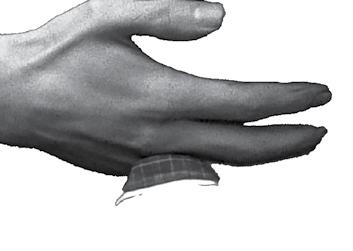

The Cinematheque
The Cinematheque, founded in 1972, is a film institute and media education centre devoted to celebrating the art and history of Canadian and international cinema and understanding the impact of moving images and screen-based media in our lives. Our public activities include a year- round calendar of curated film exhibitions devoted to important classic and contemporary films and filmmakers and an array of community outreach programs offering interactive learning opportunities in film appreciation, filmmaking, digital literacy, and critical thinking. We value cinema as a communal and transformative experience; believe in the importance of inclusivity and diversity in programming; and are committed to showcasing the finest achievements of local and national artists along with the best in world cinema.
Buying Tickets
The Cinematheque box office opens 30 minutes prior to the first screening of the day. Tickets can be purchased in advance online at thecinematheque.ca or during screening hours at our box office. By purchasing a ticket to a screening at The Cinematheque, you automatically become a member of the Pacific Cinémathèque Pacifique Society.
Support
The Cinematheque is a not-for-profit society incorporated in the province of British Columbia and a registered Canadian charity. We rely on financial support from public and private sources. Donations are gratefully accepted. A tax receipt will be issued for all donations of $60 or more. support@thecinematheque.ca
Venue Rental
The Cinematheque theatre is available for rental. We offer simple, all - inclusive rental terms and top-quality service, and are equipped for the projection of a wide range of film, video, and digital formats. Whether you are looking for somewhere to host a private screening, film premiere, community event, conference, or work function, our theatre is the ideal venue. theatre@thecinematheque.ca
Advertising
The Cinematheque offers advertising opportunities in this program guide, on-screen in our theatre, and digitally in our weekly e-blast. advertise@thecinematheque.ca
The Cinematheque’s program guide is published six times a year with a bi - monthly circulation of 12,000.
The Cinematheque gratefully acknowledges the financial support of the following agencies:
Executive Director
Kate Ladyshewsky
Artistic Director
Shaun Inouye
Learning & Outreach Director
Chelsea Birks
Communication & Marketing Manager
Gerilee McBride
Venue Operations Manager
Linton Murphy
Technical Manager & Head Projectionist
Al Reid
Operations Coordinator
Emma Pollard
Learning & Outreach Coordinators
Thea Loo, Sam Mason
Learning & Outreach Intern
David Wu
Learning & Outreach Assistant
Sangeon Yoo
Programming Associate Michael Scoular
Theatre Managers
David Avelino, Prue Baker, Jessica Johnson, Luke McEwan, Asher Penn, Salem Sharp
Projectionists
Dama Correch, Ryan Ermacora, Lukas Henne, Ron Lacheur, Abigail Markowitz, Eirinn McHattie, Jana Rankov
Board of Directors
David Legault (Chair)
Leah Mallen (Vice Chair)
Classification Information
Rudy Bootsma (Treasurer)
Tim Reeve (Secretary)
Nicole Prior, Ken Tsui, Eric Wyness
Theatre Volunteers
Taylor Bishop, Sasha Bondartchouk, Haley Briggs, Cedric Chauve, Nadia Chiu, Curtis Comma, Inês Devezas, Robert Ferguson, Moana Fertig, Saher Ghanem, Zack Ginies, Shokei Green, Pablo Griff, Georgia Haire, Michiko Higgins, Gurjot Hothi, Fiona Hu, Chris Kay, Savannah Kemp, Ray Lai, Stewart Lampe, Simon Lee, Anna Lester, Kam Fung Li, Qun Ma, Vit Mlcoch, Milad Mokhtari, Chelsey Mulligan, Lars Neufeld, Veronika Ong, Cameron Power, Sweta Shrestha, Danika Speight, Syed Mustafa, Hava Tepperwin, Kate Tung, Wangeci Warui, Jonny Warkentin, Jonathan Wells, Marlon Wiebe, Harry Wong, Ziyi Yan
Distribution Volunteers
Hagar Bach, Horacio Bach, Kyle Bowman, Anson Cheng, Gail Franko, Cristian Hernandez, Gerald Joe, Alan Kollins, Jim Miller, Aleksander Sochan, Lora Tanaka, David Trotter, Harry Wong, Iris Xian
Office Volunteer Jo B.
Special thanks to our spare volunteers!
Program notes: Shaun Inouye, Michael Scoular
DIM Cinema notes: DIM Collective Frames of Mind notes: Selina Crammond
Our Stories to Tell notes: Akira Iahtail PELAN Presents notes: PELAN
Additional program notes: Jim Sinclair
Design and layout: Gerilee McBride
Cover image: Double Indemnity, Billy Wilder, 1944
Contents image: Jim Bindon, Cinematheque board member, 2012–2021
The Cinematheque is situated on the unceded, ancestral homelands of the xʷməθkʷəy əm (Musqueam), Sḵwx̱wú7mesh (Squamish), and səlilwətaɬ (Tsleil-Waututh) Nations.
Screenings are restricted to 18+ unless the film has been classified by Consumer Protection BC. This is indicated in our program guide and/or on our website by the inclusion of one of the following ratings:
Suitable for all ages
Parental discretion is advised
Viewers under 14 years of age must be accompanied by an adult
Viewers under 18 years of age must be accompanied by an adult
Restricted to viewers 18 years of age and over
Ticket Rates
$15 General (18+), $13 Senior (65+), $11 Student
Multi-film ticket packs are available for purchase at a discounted rate from our gift shop. Ticket rates may vary for special events.
Film Club, our family matinee series, has the reduced admission rate of $7 for ages 13 and under, and $18 when combined with an adult ticket.
Free admission for Indigenous Peoples.
It

New Restorations
July 3 (Thursday) 6:30 pm
July 7 (Monday) 6:30 pm
July 11 (Friday) 6:30 pm
July 20 (Sunday) 1:00 pm

Barry Lyndon
United Kingdom/USA 1975
Stanley Kubrick
185 min. DCP
Stanley Kubrick’s lavish adaptation of Thackeray’s picaresque novel was once dismissed by Pauline Kael and others as a “coffee-table movie,” but has since made its long, inexorable climb to masterpiece status—and to recognition as one of Kubrick’s pinnacle achievements. Ryan O’Neal is the eponymous Barry Lyndon, an 18th-century Irish rogue and social climber in relentless, unscrupulous pursuit of wealth and status. Kubrick’s painterly film was a massively expensive undertaking. Painstakingly researched to ensure historical accuracy, sumptuously costumed, and filmed on location in Ireland, Great Britain, and Germany, it took some 300 days to shoot and made pioneering use of an ultra-sensitive, NASA-developed lens in order to film sequences lit only by candlelight. Barry Lyndon won Oscars for its cinematography, art direction, costumes, and musical score. This stunning 50th anniversary restoration closed out Cannes Classics in May.
Barry Lyndon will include a 10-minute intermission between Part I and Part II.
“One of the most beautiful of all Stanley Kubrick’s films … As leisurely as it is painterly, this is a masterclass in cinematography … Don’t miss the chance to watch it in a cinema.”
Wendy Ide, The Observer
July 4 (Friday)
8:10 pm
July 6 (Sunday) 6:30 pm
July 9 (Wednesday)
July 21 (Monday)
8:10 pm
6:30 pm

Dogtooth
Greece 2009
Yorgos Lanthimos
94 min. DCP
In Greek with English subtitles
“The most original, challenging, and perverse film of the year … It can be viewed as absurdist horror or the cruelest of comedies.”
Aaron Hillis, Village Voice
The flash-bang existence of the Greek Weird Wave, a critics-ascribed movement born from the tumult of a country on economic life support, is unthinkable without Yorgos Lanthimos’s international breakthrough. With shades of Haneke-like distantiation and Noé-esque extremity, Dogtooth stages a deranged, domestic nightmare within the suburban home of a Greek nuclear family. There, a couple goes to disturbing lengths to keep their children a son and two daughters, each now in early adulthood ignorant of the outside world, fabricating lies and enforcing bizarre rules to prevent them from traversing the garden hedge. When a stranger enters the fold, the introduction of sex and pop culture sets catastrophe in motion. A thoroughly perverse, pitch-black parable of family dynamics and walled-in ideology, Lanthimos’s Oscar-nominated picture catapulted the director to the top rung, a station he’s occupied ever since. This new restoration brings the film’s warped vision back into blistering focus.
Prix Un Certain Regard
Cannes 2009
August 4 (Monday) 6:30 pm
August 16 (Saturday) 8:40 pm

Pink Narcissus
USA 1971
James Bidgood
70 min. DCP
In 1963—the year of Scorpio Rising, Flaming Creatures, and Warhol’s first films— physique photographer James Bidgood began working on an ambitious homoerotic film fantasy he called Pink Narcissus. For over six years, he filmed his star, Bobby Kendall, using 8mm Kodachrome and later 16mm Ektachrome stock on numerous lavish sets, most built in the confines of his cramped Manhattan apartment. After many delays, the film’s backers grew tired of waiting for a finished film and dropped Bidgood from the project. Bidgood repudiated their version, and when Pink Narcissus was released in 1971, his credits for producing, directing, writing, and photography were listed as “Anonymous.” Nearly thirty years later, Bidgood reclaimed his role as the visionary creator of this queer cinema classic and became a major influence on artists ranging from Pierre et Gilles to David LaChapelle and Steven Arnold. —Michael Lumpkin, UCLA Film & Television Archive
“As beautiful and timeless as The Wizard of Oz.” John Waters, Artforum
New Cinema
July 4 (Friday) 6:30 pm
July 6 (Sunday) 8:40 pm
July 9 (Wednesday) 6:30 pm

Invention
USA 2024
Courtney Stephens
72 min. DCP
“[A] dizzying docu-fiction … Invention proves to be nothing less than an up-to-the-minute report on the American state of mind—on the epidemic inability to distinguish fact from fiction.”
Richard Brody, The New Yorker
Tantalizing mysteries abound in Courtney Stephens’s Invention, a fiction feature by the experimental documentarian that nearly calls for scare quotes to stress the nonfictional undercurrents at work. The premise has thirtysomething protagonist Carrie drawn into the New Age orbit and dubious business affairs of her recently deceased father, a Berkshires doctor of pseudoscientific renown who has bequeathed her the patent to an FDA-recalled “healing device.” The slippage in make-believe arrives with the knowledge that Callie Hernandez, star and co-conceiver of this Super 16mmshot drama, is ostensibly playing a version of herself, a prospect the movie artfully advances in uncut, audio “outtakes.” That the actor’s late father is the same guru-like figure appearing in the film’s archival public-access material adds a wrinkle of real-life intrigue to the conspiracies surrounding his death; it also renders Hernandez’s Locarno-winning performance, a tender braiding of bewilderment and numbing loss, all the more slippery to unravel.
August 15 (Friday) 8:40 pm
August 28 (Thursday) 6:30 pm
August 31 (Sunday) 8:30 pm

By the Stream
수유천
South Korea 2024 Hong Sangsoo 111 min. DCP
In Korean with English subtitles
Vancouver Premiere
The brisk pace of output by Korean auteur Hong Sangsoo has become a defining feature of his almost episodically oriented cinema. The antithesis of event moviemaking, Hong’s homespun practice is a Farberian “termite art” of everyday drama and interconnected themes—of incremental observations on life that, film by film (nibble by nibble), attain a gentle greatness. By the Stream, the second Hong installment of 2024, reunites regulars Kim Minhee and Kwon Haehyo for an autumnal comic tale set on a liberal arts campus in Seoul. There, introspective textile artist Jeonim (Kim) has invited her uncle Sieon (Kwon), a once-prominent actor, to direct a play for the college’s annual sketch festival. (He’s a last-minute replacement for a disgraced teacher.) As a syrupy— and predictably booze-abetted—romance starts up between Sieon and Jeonim’s starstruck boss (Cho Yunhee), Jeonim finds herself relegated to third wheel. Kim’s delicate, nuanced performance won top honours at Locarno.
“Wondrous in its simplicity yet expansive in feeling … A deeply affectionate rendering of the constant process of self-actualization.”
NYFF 2024
Vancouver Premiere
Unsettled Reality, Tomorrow’s Imagination
July 5 (Saturday) 7:00 pm



Program runtime: 73 min.
In Farsi with English subtitles


This selection of five films by young Iranian women filmmakers delves into the fragile and shifting nature of contemporary existence as seen through their unique perspectives. Through intimate narratives and striking visuals, these films illuminate the dreams, fears, and resilience of a generation navigating uncertainty while daring to envision alternative futures. The collection is a mosaic of voices, reflecting both the cracks in the present and the sparks of creativity that light the path forward, offering a poetic and philosophical reflection on what it means to dream in an unstable world. —Mania Akbari
Curated by Mania Akbari with Nafiseh Zare
This program will be followed by a virtual Q&A with select filmmakers, moderated by MENA Co-Director Arman Kazemi.
“Unsettled Reality, Tomorrow’s Imagination” is co-presented with MENA Film Festival as part of its Mini Summer series. Join us at 6:00 pm for pre-screening live music and catering in the Cinematheque courtyard.

Falling Up
Iran 2022
Maryam
Bakhtiari
14 min. DCP
Interlude
Iran 2023
Golzar Farzaneh
13 min. DCP
All the Time
Iran 2020
Shadi
Karamroudi
15 min. DCP
Homa
Iran 2023
Mahdokht
Molaei, Nima
Naderi
15 min. DCP
A Long Walk
Iran 2023
Sonia Sanjari
16 min. DCP
Essential Cinema
July 13 (Sunday) 1:00 pm
August 4 (Monday) 12:30 pm
August 17 (Sunday) 1:00 pm
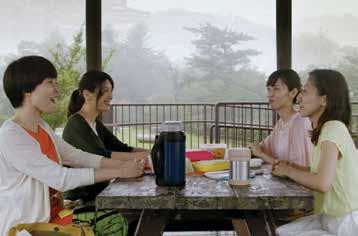
Happy Hour
Japan 2015
Hamaguchi Ryusuke
317 min. DCP
In Japanese with English subtitles
“A fascinating, towering confection of contradictions: a modest epic; a work that simultaneously resembles both contemporary television drama and art cinema at its airiest; a film you feel like you’ve seen before but that somehow never ceases to surprise. I suspect we’ll be talking about this one for some time to come.”
Dan Sullivan, Film Comment
A powerful affirmation of the immersive potential of cinema, Happy Hour is a slow-burning epic chronicling the emotional journey of four thirtysomething women in the misty seaside city of Kobe, Japan. As they navigate the unsteady currents of their work, domestic, and romantic lives, a sudden unexpected rift opens that propels each to a new, richer understanding of life and love. [Drive
My Car] director Hamaguchi Ryusuke’s wise, precisely observed, compulsively watchable drama of friendship and midlife awakening runs over five hours, yet the leisurely duration is not an indulgence but a strategy that creates a novelistic space where everyday moments become charged with possibility. The result is a subtle, emotionally intense, and spectacularly complex rendering of the details of daily life in which ideas and feelings are swayed by the unseen forces of friendship and love and buffeted by the weight of deception, loyalty, and tradition. —Janus Films
Happy Hour will include a 15-minute intermission.
Best Actress (Kawamura Rira, Kikuchi Hazuki, Mihara Maiko, and Tanaka Sachie)
Locarno 2015
September 1 (Monday) 12:30 pm

La Commune (Paris, 1871)
France 2000
Peter Watkins
345 min. DCP
In French with English subtitles
The films of British iconoclast Peter Watkins (Punishment Park) are like nothing else. The components of La Commune, his final masterwork, are easy to describe: epic theatre, historical recreation, and media mimicry. But the experience of the film— exhaustive, exciting, and an education in what happens between actors and cameras and the interpretive space they open up—is something overwhelming yet distilled, a sprawling portrait of “prerevolutionary atmosphere” unfurled in the space of a warehouse among a cast of over 200 actors. The film tracks the history of the Paris Commune, in which a mass of citizens, of different affiliations and classes, argue, strategize, and take action together. Arms are seized, hostages are taken, and a radical form of self-government is installed. Watkins defamiliarizes the events by covering them in a blanket of anachronistic TV journalism, to model the problems— and chronicle the euphoric voices and sights—germane to representing and waging a revolution.
La Commune (Paris, 1871) is presented in two parts. There will be a 20-minute intermission following Part 1.
“[A] magnum opus … La Commune isn’t so much a realistic recreation as it is a dialogue between past and present, with each time frame used to shape and define the other … This Commune exists now, around the corner, and Watkins dares us to step in.”
Jonathan Rosenbaum, Chicago Reader
New Documentary
August 15 (Friday) 6:30 pm
August 20 (Wednesday) 6:30 pm
August 25 (Monday) 8:45 pm

7 Walks
with Mark Brown
7 promenades avec Mark Brown
France 2024
Pierre Creton, Vincent Barré
103 min. DCP
In French with English subtitles
Vancouver Premiere
“Tranquil, tender, and transportive … There’s such intimacy, often poetry, to Brown’s narration that one feels enthralled as much as enlightened by these long strolls through the French countryside.” Isaac Feldberg, RogerEbert.com
French filmmaker-cum-farmer Pierre Creton ambled largely under the radar before his homoerotic horticulture picture A Prince made him a name of note. His superb documentary follow-up eschews the weirdness and sex, but much remains familiar in this edifying tour of Normandy’s indigenous flora. Our learned and exceedingly likeable guide is the francophone British paleobotanist of the title, whose seven serene walks across the region reveal a world of ancient plant life on the brink of ecological, human-caused collapse. Creton, codirecting with creative and life partner Vincent Barré, devises an ingenious twofold structure: the front half documents Brown’s excursions accompanied by a 16mm-camera crew (including Antoine Pirotte, star of A Prince); the back half presents the analogue footage, an exquisite collection of moving-image still life and a taxonomy of the journey’s unexpectedly emotional discoveries. Botany speak may dominate the conversation, but it’s tenderness, for nature and those united by its wonder, that truly prevails here.
Tsui Hark: Everything Is Unreal
The cinema of Tsui Hark (b. 1950) is its own kind of history of the medium. Through his career, one can chart the trajectory of Hong Kong and mainland Chinese cinema, with chapters separated by the dawn of the Hong Kong New Wave in the early 1980s, the near-fatal blow of the handover in 1997, and then the expansion of cinema resources—as well as the starving of independent filmmaking and exhibition—in China in the 2010s.
Like any mass entertainer, Tsui has chosen to adapt. But for a crucial time, he led a once-in-a-century outpouring of inventive, anything-and-more film craft. After a handful of censor-baiting genre pictures that directly challenged the status quo of Hong Kong filmmaking, he established the Film Workshop, his own production company, in 1984. This transition from combative films like We’re Going to Eat You and Dangerous Encounters of the First Kind (both released in 1980) gave way to a fast-paced model within which he would make his more personal films (like 1984’s Shanghai Blues), fire off quick genre successes to pay the bills, and mentor (and occasionally infuriate) new directors—in particular John Woo and Ching Siu-tung.
This was the golden age of Hong Kong cinema, an unprecedented confluence of forces—political, artistic, and economic—that produced a near-total cinematic rejuvenation. Tsui, along with talents like Ann Hui, Patrick Tam, and Wong Kar-wai, had resources, freedom, and a demanding audience. The period’s end has left no clear inheritors, except for a long tail of nostalgia for a time that, perhaps even more than the Hollywood studio system, allowed for artistic flourishing for actors and directors alike. (A glance at Tsui’s call sheet includes stars like Maggie Cheung, Jet Li, Brigitte Lin, Sally Yeh, Anita Yuen, and Joey Wong.)
Tsui was born in Guangzhou, China, raised in Saigon, Vietnam, then educated (briefly) in Austin, Texas, before he began to work in Hong Kong. His films can now be viewed as exemplars of genre literacy and action film craft—
he was singled out on this basis by film scholar David Bordwell in his seminal text Planet Hong Kong —while his multi-continental appeal could even be seen in microcosm when his films were released in North America. In a city like Vancouver, they would often play Chinese theatres, but also attract the interest of college students and arthouse patrons. As one critic in San Francisco reported, “Any film by Tsui Hark picks up a devoted, often boisterous following among cinema cognoscenti.”
In interviews, Tsui foregrounded the duty a filmmaker has to an audience, sometimes deflecting questions with an anti-intellectual pose. “Cinema shouldn’t be taken so seriously,” he said. “It’s entertainment, and its purpose is to fill those gaps of feeling when you’re bored and frustrated with life and want to feel better.”
But his workaholic tendencies and competitive spirit weren’t fuelled by box-office success alone. Whether the culinary art of The Chinese Feast, the ancient myth of Green Snake, the martial arts of Once Upon a Time in China, or the historical ruptures in Shanghai Blues and Peking Opera Blues, Tsui clearly believed that cinema could only sustain itself by building on storied traditions. Typically for Hong Kong genre cinema, broad humour, pulp romance, and strenuous, esoteric achievement live shoulder-toshoulder, but these are just the ingredients. Tsui’s ambitions aren’t to aim low, but instead strive toward a limit test—can something pleasurable and beautiful and boundary-pushing stand the test of time?
This Hong Kong-focused retrospective covers only 11 years of Tsui’s fivedecade career. Yet it contains worlds of technique, twists of irony, and totalizing clarity that most directors today can’t hope to access. Following retrospectives in Hong Kong and Italy’s Far East Film Festival, as well as re-releases of his work in France, The Cinematheque is excited to present the first retrospective of Tsui’s films to happen in Vancouver. Many titles will screen from recent restorations—including, for this Year of the Snake, Green Snake on opening night—with the series augmented by a presentation on 35mm and a special event co-presented with the Chinese Canadian Museum. Tsui and his generation of Hong Kong filmmakers moved fast, broke rules, and had little time to look back—this series offers a chance to see, in detail, the ways his work transformed and expanded the field of popular filmmaking.
Special thanks to Bibiana Chan (Netvigator), Erin Farrell (Film Movement), Giulia Saccogna (BFI), Valerie Torres (Shout! Factory), and June Wong (Mandarin Motion Pictures Ltd.) for their generous assistance in mounting this series.
July 10 –August 3

“Tsui
has emerged as the most influential figure of the ’80s and ’90s … It is his particular genius to combine the flavour of very ancient narratives with jarringly futuristic tones.”
Geoffrey O’Brien, New York Review
of Books
July 10 (Thursday) Opening Night
7:00 pm

Green Snake
Hong Kong 1993
Tsui Hark
99 min. DCP
In Cantonese with English subtitles
New Restoration
“Beautiful … Flirts with outright silliness, but it’s impossible to ignore the spell of erotic wonder [Green Snake] casts, and its deep ambivalence about the process of human socialization.”

Howard Hampton, Film Comment
A film full of mythic beasts, practical special effects, and colour filters, Green Snake is also a masterful allegory on the process of becoming human: contradictory desires, arbitrary ethics, and cycles of death and life. Drawn from one of the best-known Chinese folktales, the plot’s legendary outline allows Tsui Hark, at the peak of his powers of visual storytelling, to freely mix ironic, erotic, comedic, and awe-inspiring material from scene to scene. The interventionist practices of a Buddhist monk on the path to enlightenment (Vincent Zhao) meet a test of principles when Green Snake (Maggie Cheung) and White Snake (Joey Wong) fall to earth and assume human bodies. The film’s entrancing opening-credits song suggests that binary thought (romance and its absence, good and evil) produces faulty concepts, and, true to form, Tsui’s blend of tones allows his characters to choose both responsibility and pleasure—airborne chases, weather-controlling powers, and promises of eternal love.
The opening-night screening of Green Snake will be preceded by a video introduction from film critic Sean Gilman.
July 12 (Saturday) 6:30 pm
July 27 (Sunday) 8:40 pm
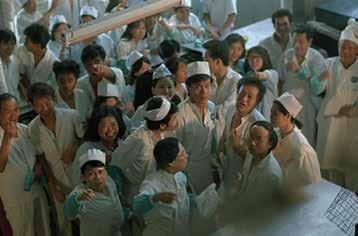
Working Class
打工皇帝
Hong Kong 1985
Tsui Hark
98 min. Blu-ray
In Cantonese with English subtitles
The tension between pure invention and reliable formula is expressed in the smooth plot mechanics of this early workplace comedy from director (and featured co-star) Tsui Hark. Whether it’s the injuries of five-a-side football, instant-noodle-packing factory floors, or screwball romance, Working Class is a rapidly paced catalogue of the average week’s indignities in a classconscious Hong Kong. As in a classic studio picture like Stanley Donen’s The Pajama Game, every emphatic declaration for labour rights or management control is contested, then resolved through romantic entanglement, physical slapstick, or mistaken identity. The star representative on the workers’ side is played by Sam Hui, the Cantopop legend who contributes the film’s theme song. Joey Wong (Green Snake) is the boss’s worker-sympathetic daughter. Tsui’s performance as a worker is as energetic as his directing: bold and obvious one moment, providing cover for intelligent subterfuge the next.
“Close to the heart of what makes Tsui a great filmmaker … The humour comes organically out of the heroes’ anarchic rejection of the social codes that demand fealty to the bosses … Every prank becomes an act of protest.”
Sean Gilman, The Chinese Cinema
“At his best Tsui is one of the most imaginative stylists in contemporary cinema.”
David Bordwell, Planet Hong Kong
July 12 (Saturday) 8:40 pm
July 16 (Wednesday) 6:30 pm
July 25 (Friday) 9:00 pm
August 3 (Sunday) 4:00 pm

Shanghai Blues
上海之夜
Hong Kong 1984
Tsui Hark
103 min. DCP
In Cantonese, Mandarin, and Shanghainese with English subtitles
New Restoration
“The escapism, so carefully crafted and self-aware that it becomes an analysis of escapism, has a cruel aftertaste … sweetened by a constant sentimental undertone.”
Geoffrey O’Brien, New York Review of Books
A synthesis of both his provocative streak and his desire to capture Hong Kong’s popular imagination, this personal favourite of director Tsui Hark is the first film produced under the independent banner of his Film Workshop. Shanghai Blues is whip-smart and full of screwball staging, traversing bed-swapping romance, the near-apocalypse of the Second SinoJapanese War, and a nostalgic yet heavily ironic treatment of the entertainment industry. Shu-Shu (Sylvia Chang) is a nightclub performer. Each evening’s return to her shabby apartment brings her closer to neighbours Tung (Kenny Bee), a violinist, and Stool (Sally Yeh), a naive schoolteacher whose education in Shanghai’s thieves, casting agents, and other grifters complicates, as if by fate, their lives. Tsui understands that for characters on an economic precipice, life moves at an accelerated pace: the war is elided in a cut, and fortunes change wildly in a single day. This restoration, slightly edited and with a multi-language dub, premiered at Cannes Classics 2024.
July 13 (Sunday) 7:00 pm
July 19 (Saturday) 8:40 pm
July 28 (Monday) 6:00 pm

Once Upon a Time in China
Hong Kong 1991
Tsui Hark
134 min. DCP
In Cantonese, Mandarin, English, and French with English subtitles
New Restoration
Tsui Hark’s mix of politics and action theatrics reached new levels of prestige in Once Upon a Time in China, in which anti-imperialist motivation and national pageantry are embodied in the glorious kung fu of Wong Fei-hung, a careerdefining role for star Jet Li. In the waning years of the Qing dynasty, Westernization is taking what it can find in Foshan: embassies, treaty-makers, immigration marketers, and missionaries are all setting up their industries inside China’s borders. For Wong, Foon (Yuen Biao), and Thirteenth Aunt (Rosamund Kwan), this maze of intrigue is solvable through ingenuity and art that can adapt without assimilating. Delaying any full combat until a half-hour into the film, Tsui creates audacious limitations for Li to play within: matches in which Wong tries not to fight, to only disarm or to dodge gunfire and flaming arrows. (A fair fight is a boring one!) Laws of physics are bent, but not entirely defied, in the steady frame of Tsui’s camera direction.
“Tsui [works] his double-edged magic as a gifted crowd-pleaser with a higher purpose, on an epic scale.”
David Chute, Film Comment
July 16 (Wednesday) 8:40 pm
August 1 (Friday) 6:30 pm
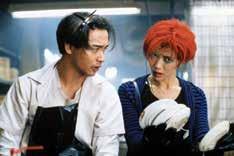
The Chinese Feast
金玉滿堂
Hong Kong 1995
Tsui Hark
100 min. DCP
In Cantonese with traditional Chinese and English subtitles
New Restoration
“Directed by a genius … As an exploration of what a talented filmmaker can do with a chef, some pots and pans, and a whole lot of food, this is a real tour de force.”
Mick LaSalle, San Francisco Chronicle
Tsui Hark has often downplayed the personal aspect of his filmmaking, preferring to label himself an artisan. In The Chinese Feast, he finds an exact metaphor for his craft: the highly specialized, exactingly overseen world of high-end Chinese cuisine. No comparable field could require more esoteric knowledge, to-the-limit labour, or awareness of an audience’s taste. It’s an immediate and altogether physical act of creation, and one delivered with shock-to-the-system comedy, action-scene choreography, and genuinely unhinged—and perfectly cast—romantic energy. As Sun, Leslie Cheung delivers one of his greatest performances. His ex, a hotel chef, has left for a job in Toronto. Hoping to follow the same path, he searches for an apprenticeship, starts at the bottom, and runs into Wai (Anita Yuen). Their spark reinvigorates a dormant restaurant rivalry, and culminates in a competition—a showcase for how Tsui’s skillset makes all modern food cinematography look anemic by comparison.
“A major talent, an artist with a zest for the grand entertainment tradition of international cinema who brings a sardonic and topical wit to his glosses on popular culture.”
Pat Aufderheide, Film Comment
July 19 (Saturday) 6:30 pm
July 21 (Monday) 8:40 pm
July 30 (Wednesday) 6:30 pm

The Blade
Hong Kong 1995
Tsui Hark
101 min. 35mm
In Cantonese with English subtitles 35mm Print
Tsui Hark’s genre revisionism was never more extreme than in The Blade, a raw stylistic departure that takes Chang Cheh’s The One-Armed Swordsman as its mythic departure point. As with all of Tsui’s films, the guiding idea is sharp and clear: if situated in a realistic environment of war and combat, the ideals of martial arts might look less balletic and more like a lawless portrait of horrific danger and loss. The film is narrated by Ling (Song Lei), whose pull of desire pits two metalsmiths against one another until village games are swept away by the chaos of invasion and the irreparable, merciless physics of bear traps, spikes, and the film’s title weapon. Vincent Zhao (Green Snake) plays the hero, but Tsui isn’t interested in a standard odyssey. The director employs a rapidly cut, handheld approach that hurls the genre’s typical rewards—of combat as a refined tradition— into an extended nighttime maelstrom of abandoned souls. Tsui also edits. Sally Yeh sings the end-credits song.
Advisory: The Blade includes a scene of sexual violence.
“Tsui’s most underrated movie … [He] depicts kung fu fighting less as a graceful subset of gymnastics than as a form of manual labour, with slow-motion tableaux of muscular combatants reminiscent of social realism.”
David Chute, Film Comment
July 24 (Thursday) 7:00 pm
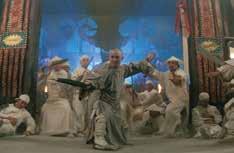
Once Upon a Time in China II
Hong Kong 1992
Tsui Hark
112 min. DCP
In Cantonese and English with English subtitles New Restoration
It’s possible to see Once Upon a Time in China II as merely the continuing adventures of Wong Fei-hung (Jet Li), made in the successful wake of Tsui Hark’s iconic first entry. But despite—or perhaps because of—the fact the film was produced in only two months, it’s possessed by an energetic decisiveness possible only within the lightning-in-a-bottle Hong Kong film industry of the 1990s. The plot, which travels by train to Canton, involves the reactionary White Lotus cult, the medical acumen of Sun Yat-sen (Zhang Tielin), and a foil to Wong in military commander Nap-lan (Donnie Yen). The acrobatic action is choreographed at the level of dance and destruction; one training scene between Wong and Thirteenth Aunt (Rosamund Kwan) is abstracted into fantastic shadows. Arthur Wong, who previously worked with Lau Kar-leung, returns as cinematographer, while Richard Yuen (The Bride With White Hair) amplifies the action with a nimble, varied score.
Post-screening discussion with composer Richard Yuen.
This screening is co-presented with the Chinese Canadian Museum in conjunction with its exhibition Dream Factory: Cantopop Mandopop 1980s–2000

July 26 (Saturday) 8:30 pm

Peking Opera Blues
刀馬旦
Hong Kong 1986
Tsui Hark
104 min. Blu-ray
In Cantonese with English subtitles
Perhaps no other film better displays the blink-and-you-miss-it inventiveness of Tsui Hark than Peking Opera Blues. It isn’t just one of the greatest Hong Kong action movies of all time, or merely an exquisite combination of political history and gender-defying performance. Tsui’s enthralling balance of tone, editing patterns, and comedic role-playing means the film is all of these things at warp speed, a dazzling expression of genre multiplicity that shifts between modes moment to moment. This flexibility extends to the cast: three women (Brigitte Lin, Sally Yeh, and Cherie Chung), a spy, an actor, and a musician, are assuming roles to survive the violent end of the Qing Dynasty, aligning themselves with warlords, revolutionaries, seducers, and friends. Each identity opens up traps, expectations, and freedoms. Whether on the stage or in a melee, this is a film that plays out under a ruthless and overwhelming urge to execute the perfect stunt—both for laughs and for something deadly serious.
“Tsui’s masterpiece … Unequaled passages of brilliantly choreographed and witty fast action.”
David Chute, Film Comment


Unlike other major technical enhancements to arrive in the last hundred years—sound, colour emulsion, widescreen aspect ratios, and surround mixing—and despite being greeted with substantial public enthusiasm at the onset of its notable waves in the mid1950s, early 1970s, and late 2000s, 3D has, for myriad reasons, never managed to become a production or exhibition standard.
This intermittency has no doubt affected the format’s ability to mature, suspending it in a perpetual “demonstration” phase that privileges the wonder of its technological accomplishment, and taking no shame in drawing audiences’ attention to its full formal potential.
3D’s “look at me!” attitude never goes away. Indeed, stereoscopy could be thought of as cinema’s Peter Pan format—the attentionseeking child that can’t grow up, instead opting to chase its own shadow. Thus, we celebrate 3D’s primal and flamboyant energy, showcasing films made by artists and filmmakers who take playful and innovative approaches to the third dimension.
The link between 3D spectacle and early cinema—an era famously described using the term “cinema of attractions” by historian Tom Gunning—runs deep. That period’s sensibility, marked by the image’s drive toward visibility and a direct address to the spectator, is abundant in this program, where attractions abound in both narrative and experimental contexts. In “Planes, Frames, and Autostereoscopy,” we present a collection of shorts made by several trailblazing film and video artists to showcase a spectrum of unorthodox stereoscopic effects, for which we’ll provide five different kinds of 3D glasses.
In a longer form, Ulysses in the Subway (2017) takes us on a stunning journey through the literal underground, as members of the multidisciplinary digital arts collective OpenEndedGroup collaborate with the godfather of experimental 3D, Ken Jacobs, and his partner Flo, algorithmically generating all of the film’s images from a field recording captured in New York’s subway system. As if it still needs to be said, these films can make you feel in ways you never imagined, and that effect is inextricable from their 3D presentation.
Curated by Blake Williams
A version of “Dimensional Excursions” was presented at TIFF Cinematheque in 2024. Film notes, written by Williams, have been adapted from that exhibition.
Presented in partnership with Basically Good Media Lab, Emily Carr University of Art + Design

Dimensional Excursions:
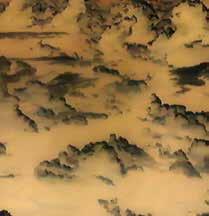
July 17 (Thursday)
Planes, Frames, and Autosteroscopy— 3D Shorts
Program runtime: 66 min.
Long associated with exorbitance, computer-generated effects and high-tech gloss, 3D has nevertheless been adopted by filmmakers and artists throughout moving-image history. The short films in this program each take an unorthodox approach in their explorations of stereoscopic illusion, turning to DIY techniques and lo-fi tools to add a unique sense of depth to our encounters with their images, whether they require glasses or not. Calling on six(!) different 3D formats—Dolby 3D, Anaglyph, ChromaDepth, Pulfrich, Diffraction, and the autostereoscopic (i.e. glasses-free) Eternalism—these works collectively expand our notion of how lens filters affect and interact with the moving image, and make full use of cinema’s structural and material make-up—colour, grain structure, movement, and light—to utilize their respective spectacles (or the lack thereof!). Together, they create new, previously unimaginable sensations for the brain and eyeballs.
3D video introduction by curator Blake Williams.
Special ticket price: $20
No passes or Ticket Pack vouchers will be accepted for this screening.
Advisory: Some films in this program contain strobing effects that may affect photosensitive viewers.
Dimensional Excursions
USA 2024
Peter Rose
15 min. DCP
Polarized 3D American filmmaker Peter Rose has spent nearly fifty years exploring time, landscape, and repetition with a mathematician’s precision. Dimensional Excursions offers a selection of 3D scenic composites that transform public space into a hyper-dimensional fantasia.
3D Movie
USA 1975
Paul Sharits
8 min. 16mm
A highly curious stereo grain-storm, the existence of which was only discovered a decade ago, 3D Movie relies on old school redcyan Anaglyph glasses to divide its millions of dancing celluloid particles—red and pink, blue and turquoise—as they slither around one another in a sea of unresolvable information.
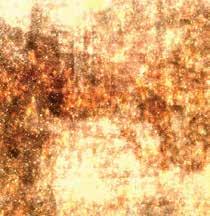
Innovation in 3D Cinema
UFOs USA 1971
Lillian F. Schwartz
3 min. Digital

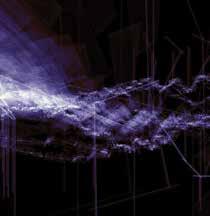

6:30 pm July 17 (Thursday)
Ulysses in the Subway
USA 2017
Ken Jacobs, Flo Jacobs, Paul Kaiser, Marc Downie
61 min. DCP
Trailblazing computer artist Lillian F. Schwartz only discovered, decades after making her iconic animations, that many of them became 3D if viewed through ChromaDepth glasses. Radiant and colourful, UFOs is a fast-moving display of three self-orbiting orbs, which in 3D weave around one another in manic, seemingly impossible ways.
UFOs courtesy of the Collections of The Henry Ford
Above the Rain USA 2019
Ken Jacobs
13 min. DCP
American 3D maven and experimental-cinema icon Ken Jacobs employs his patented “Eternalism” technique to transform stereo-images of ocean waves into a stroboscopic maelstrom of green matter.
cinéma concret
Japan 2015
Makino Takashi
24 min. DCP
Japanese sound and moving-image artist Makino Takashi applies the acousmatic principles of musique concrète to his signature process of layering images until they dissolve into expressionistic abstractions.
Let Your Light Shine USA 2013
Jodie Mack
3 min. Digital
American filmmaker Jodie Mack made Let Your Light Shine as the ecstatic coda for her blockbuster avant-garde roadshow of the same name. The black-and-white animation, handmade from optical polyrhythms, radiantly explodes off the screen when viewed through Diffraction lenses.
8:30 pm
“Remarkable … If I think about the affect of this film, then I can say with certainty that something happened. Something exciting, and a little frightening and definitely provocative.”
Tara Judah, Desistfilm
A collaboration between experimental 3D maven Ken Jacobs, his wife Flo Jacobs, and Paul Kaiser and Marc Downie, two of the founding members of the acclaimed multidisciplinary collective OpenEndedGroup. Where most films privilege the image, merely applying sound as a means to enhance what we see, Ulysses in the Subway reverses this relationship, and tasks the image with describing what we hear. Working from a field recording captured by Ken as he travelled home to Flo via New York City’s labyrinthine subway network, Kaiser and Downie built the film’s visual palette through custom-made algorithms out of Ken’s soundscape. The detailed stereoscopic animations combine with the audio to craft a chaotic symphony of wavelengths, dancing before our ears and eyes. Ambient voices, machine noise, and pulses of urban life fill up this boundless arena and map out a voyage home that, like Odysseus’s return to Penelope, feels positively heroic.
Advisory: Ulysses in the Subway contains strobing effects that may affect photosensitive viewers.
preceded by
Around Is Around
Canada 1951
Norman McLaren, Evelyn Lambart 10 min. DCP
Featuring an orchestral score composed by Lou Applebaum, Around Is Around is a total rotary delight, taking viewers to a great beyond where galaxies and peculiar forms twirl and twist before us in a seductive, astral waltz.
Kurosawa Kiyoshi × 3
Kurosawa Kiyoshi might need no introduction. He directed Cure (1997) and Pulse (2001), making him a de facto figurehead of what was termed “J-Horror” in North America. And yet, his interest in genre—built on years of appreciation as a film theorist and cinephile—means he can be taken for granted. Perhaps no popular filmmaker today is as idiosyncratic as Kurosawa—devotees know he is an artist of cardboard boxes, ominous offices, and bursts of terror surrounded by uncannily prosaic images. Mainly, he thinks and works quickly, a skill honed during his pre- Cure years in the V-Cinema wilderness, perhaps too quickly for most critics to easily survey his films (last year alone he directed three of note).
Depending on whether he’s seen through his festival-awarded work, his well-known horror films, or the many exceptions, there can appear to be multiple Kurosawa modes. But one commonality is that, at his peak, there’s no one who understands better how to structure a setpiece—whether one of dread or awe or anti-spectacle. Timed to the release of his latest and highly anticipated film Cloud, this sampling of his last decade of filmmaking is a chance to revisit two bigscreen triumphs: a suburban paranoia thriller (Creepy) and an uncategorizable film that might be his unsung masterpiece (To the Ends of the Earth).
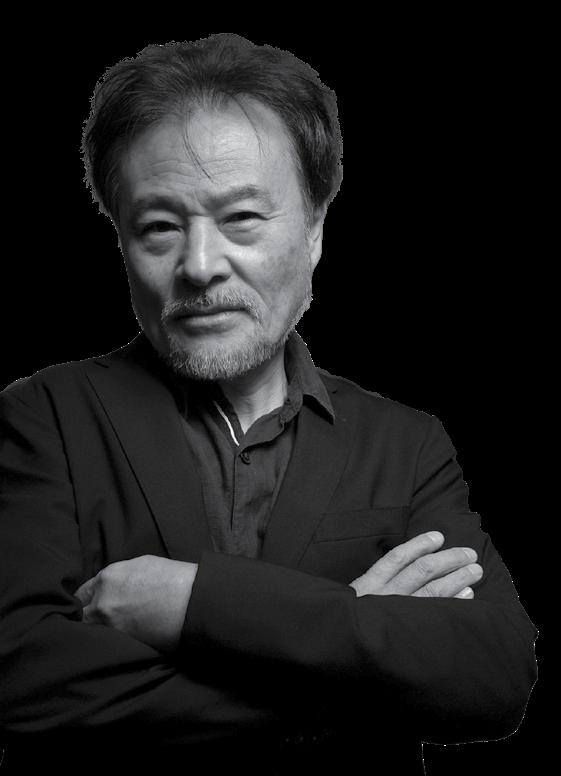
July 18 (Friday)
6:30 pm
July 20 (Sunday) 8:30 pm
July 26 (Saturday) 6:00 pm
August 1 (Friday) 8:40 pm
August 6 (Wednesday) 6:30 pm
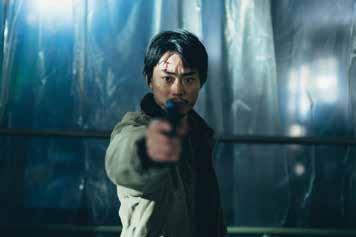
Cloud
クラウド
Japan 2024 Kurosawa Kiyoshi 123 min. DCP In Japanese with English subtitles Vancouver Premiere
“Maintaining a surface tonal grimness while turning the screws on Yoshii, Cloud is nonetheless full of manic outbursts and violence whose extravagance borders on comic ... That all of this is in service of a peculiar but total vision of cinema is undeniable.”
Vadim Rizov, Filmmaker Magazine
Kurosawa Kiyoshi’s latest feature is a human-scaled action film that shares some DNA with two films from the director’s past. Like Pulse, this is a narrative in which the internet amplifies the effects of a collective death drive: for Yoshii (Suda Masaki, the voice of the heron in The Boy and the Heron), a margin-raising online reseller, the “impulse and instinct” of his own behaviour parallels and preys upon the desires of his unseen market—until a group of users notice the pattern of his grift. And like Serpent’s Path, which the director remade in France immediately following Cloud, this is a film in which vengeance, at torturous cost, is simultaneously enacted and reflected upon in arenas both virtual and all-too-real. Kurosawa keeps his distance from the fray, dispassionately tracing the way online spaces act as incubators for medieval ideas, while slowly dialling up the intensity of the story’s mythic path, which approaches the trajectory of a lawless, tragic neo-western.
July 18 –August 6
“Kurosawa
is a master of unease and a virtuoso of the slow buildup … The most effectively discomfiting moments [in his films] aren’t the most ghoulish or gory. Rather, what spooks you are the slight shifts that turn the ordinary into the inexplicably unordinary.”
Manohla Dargis, The New York Times
July 18 (Friday) 9:00 pm
July 27 (Sunday) 6:00 pm
July 30 (Wednesday) 8:40 pm

Creepy
クリーピー 偽りの隣人
Japan 2016
Kurosawa Kiyoshi
130 min. DCP
In Japanese with English subtitles
Every decade or so, Kurosawa Kiyoshi returns to the genre premise of his breakout film Cure, which sets in opposition two figures: a detective and an enigma, each maladjusted to both professional and personal life. In ways paranoid and legitimate, comic and disturbing, ex-cop Koichi (Nishijima Hidetoshi, Drive My Car) and next-door neighbour Nishino, both married and adopting second careers, antagonize one another with an uncomfortable pattern of driveway hellos, dinner-party small talk, and other suburban hostilities. Kochi’s obsessive inquiries—into Nishino’s lack of social graces, and the lack of a clear suspect in the cold case he’s sleuthing in his spare time—bleed together in a way that plays with Kochi’s (and our own) suspension of disbelief, until the film descends into something that defeats mere psychological profiling. Kurosawa never flinches, injecting the dark lucidity of a fairy tale into a film otherwise led by pure suggestion.
“[A] superior film … A Zodiac -like detective investigation churned through the hallways of Japanese horror and the dungeons of German Expressionism.”
Lawrence Garcia, The Georgia Straight
July 20 (Sunday)
6:00 pm
July 25 (Friday) 6:30 pm
July 28 (Monday)
8:45 pm
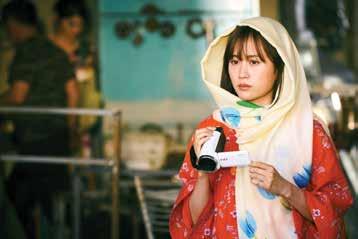
To the Ends of the Earth
旅のおわり世界のはじまり
Japan/Uzbekistan/Qatar 2019
Kurosawa Kiyoshi
120 min. DCP
In Japanese, Uzbek, and English with English subtitles
“A musical, a travelogue, a feminist awakening—every minute is surprising … Maeda Atsuko is [Kurosawa’s] Anna Karina.”
Amy Taubin, Artforum
Kurosawa Kiyoshi’s reputation as a master of genre is often attached to just one: horror. But the director has multiple masterpieces that wander far outside its parameters. There’s a strong case to be made that To the Ends of the Earth, which stars former AKB48 member Maeda Atsuko, is the latest example of this kind of major achievement. Maeda plays Yoko, a TV presenter shooting a doc-travelogue in Uzbekistan with a small crew. The lone woman on the trip, her monolingual limitations—and distance from her firefighter boyfriend—strand her in a liminal, reflective state, one that alternately gives her license to explore an unfamiliar place and fear that, as she puts it, “I’m running away from what I really want to do.” Kurosawa uses the nonfiction elements of the film to give Yoko’s on-camera work a sense of unfamiliarity and suspense, while the film’s dramatic current “off-camera” is disguised, then developed, in a way that crystallizes the dread and transcendence of new experience.






Scan the QR code to sign up for our weekly newsletter, Cinemail, and stay up-to-date with information about screenings, events, and ticket giveaways!


Opening Night
July 31 (Thursday)
6:00 pm
Courtyard Shindig
6:45 pm
Crime Wave
8:30 pm
Dirty Money
Film Noir 2025

Film noir, that uniquely American cycle of mid-century crime movies positively dripping with style and the depravity of human behaviour, returns for another cruel summer here at The Cinematheque.
Last year’s season leaned into the first half of noir’s classic corpus, drawing the majority of its roster from formative 1940s fare. Our 2025 lineup offers a more generous distribution: a collection of eight exemplars from which to trace the trajectory of noir, from bedrock (1944’s Double Indemnity, in a glistening new restoration) to burial ground (1961’s Blast of Silence, arguably the agonal gasp of the original era). Along the way, we’ll be serving up some pearl-clutching premieres (including, gasp, our first ever 3D noir!), resurrecting a favourite or two long-unseen at The Cinematheque
(Curtis and Lancaster punch-out Sweet Smell of Success anyone?), and, in the case of André de Toth’s pithy, pulpy Crime Wave, providing the exceedingly rare opportunity to experience a newly minted 35mm print. Oh, and bah-humbugs take note—there’s a surprising amount of Yuletide violence in the proceedings too.
For those unsatiated by our main event, noir casts its sordid shadow across two supplementary summertime programs: Quebecois Oscar-winner Denys Arcand’s nasty 1970s crime trilogy; and, in a sneak preview of a larger touring retrospective, a pair of Kurosawa Akira’s white-knuckle procedurals.
July 31 –September 4
Before the opening-night screening of Crime Wave, gussy up for our annual courtyard shindig featuring tunes, cold brews, tasty treats, and the latest crop of noir swag.
“Film noir was not a specific genre like gangster films, but a mood … These filmmakers were smugglers, transforming routine material into personal expression, bypassing the censors and the strictures of the Production Code.”
Martin Scorsese
July 31 (Thursday) Opening Night 6:45 pm
August 9 (Saturday) 8:40 pm

Crime Wave
USA 1953
André de Toth
74 min. 35mm
New 35mm Print
A taut, compelling, no-nonsense LA thriller from Hungarian émigré André de Toth (House of Wax), Crime Wave is one of the keystones of 1950s noir. The setup is pure pulp: ex-con Steve Lacey (Gene Nelson), now on the straight and narrow, is implicated in a cop killing when a former cellmate turns up at his apartment with a slug in his gut and stolen cash in his pocket. The disastrous domino effect sees the hapless hero coerced into a bank heist to protect his wife (Phyllis Kirk), while toothpick-chewing police sergeant Sims (Sterling Hayden) sadistically turns the screws. Originally a WB prestige production, Crime Wave saw its budget slashed after de Toth insisted on Hayden over Humphrey Bogart. (“He had a certain rumpled dignity,” the director said of his preferred star.) The punishment was a boon—a palpable sense of urgency grips the agile picture, and Hayden delivers one of his finest, and nastiest, noir performances.
Tickets for the opening-night screening of Crime Wave (July 31) will include admittance to the courtyard shindig at 6:00 pm.
Restored by the Library of Congress in collaboration with WarnerMedia and The Film Foundation in 2020.
“De Toth never makes a false move, never lets up a breakneck pace, and gets sensational performances from one of those amazing casts we once took for granted in Hollywood pictures.”
Kevin Thomas, Los Angeles Times
August 2 (Saturday)
August 20 (Wednesday)
September 4 (Thursday)
6:30 pm
8:40 pm
6:30 pm
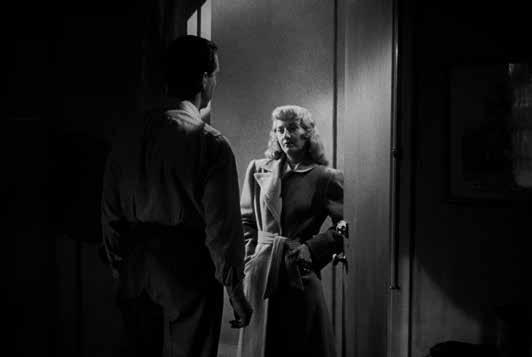
Double Indemnity
USA 1944
Billy Wilder
108 min. DCP
New Restoration
“A legendary noir … I just fell in love with it and thought, people don’t make ’em like this anymore. I want to see my darkness and my doomed characters on screen!”
John Carpenter
Fred MacMurray, as gravely wounded insurance salesman Walter Neff, staggers into a dark office, picks up a dictaphone, and offers up a startling confession of murder. So begins Billy Wilder’s sordid, superlative Double Indemnity, one of film noir’s defining works. Barbara Stanwyck sizzles as Phyllis Dietrichson, the double-crossing dame who seduces Neff into a plot to bump off her husband and collect big on his life-insurance policy. Edward G. Robinson co-stars as insurance investigator Keyes, Neff’s friend and colleague. Co-written by Wilder and Raymond Chandler from James M. Cain’s novella, “this shrewd, tawdry thriller is one of the high points of 1940s films … Stanwyck’s Phyllis Dietrichson is perhaps the best acted and most fixating of all the cold-blooded femmes fatale of film noir” (Pauline Kael). Double Indemnity returns to our lineup in a scintillating restoration sourced from a 35mm nitrate composite.

August 3 (Sunday) 6:30 pm
August 22 (Friday) 8:30 pm

Moonrise
USA 1948
Frank Borzage 90 min. DCP
“Melancholy and mysterious … [Borzage’s] doom-laden romanticism pervades the movie’s visual style as well as its drama.”
Richard Brody, The New Yorker
Frank Borzage, anointed Best Director at the very first Academy Awards in 1929, capstoned his distinguished career with Moonrise, an oneiric adaptation of Theodore Strauss’s serialized novel about an anguished psyche driven to violence. Cursed by the fate of his father, who was hanged on the charge of murder, Danny (Dane Clark) has grown up bullied and outcast in his small, Appalachian town. Now in adulthood, a cruel destiny lies in wait when, in an act of self-defence and unbridled fury, Danny kills his longtime tormentor. Salvation is sought in the love of the dead man’s fiancée (Gail Russell), and an almost mythical return to his roots in the Virginia swamplands. Displaying a masterful marriage of lush noir photography (shot by Psycho’s John L. Russell) and macabre themes with the emotional grandeur of Hollywood melodrama, Borzage’s impressionistic parable of sin and redemption is a twilight triumph for the Golden Age director.

August 3 (Sunday) 8:30 pm
August 13 (Wednesday) 6:30 pm
August 23 (Saturday) 8:40 pm
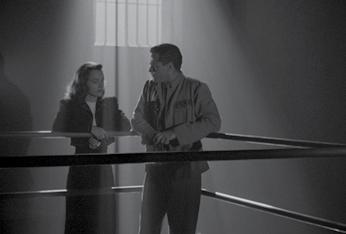
Phantom Lady
USA 1944
Robert Siodmak
87 min. DCP
New Restoration
High-heeled hep kitten Carol “Kansas” Richman (Ella Raines) combs New York City’s shadowy streets and seedy bars in a race against time to save her employer from the electric chair in Robert Siodmak’s suspenseful, stylish thriller, shot in the moody expressionist manner. Her boss (Alan Curtis) has been convicted of murdering his wife; the very existence of his only alibi, a mysterious woman in a flamboyant hat, is denied by every witness. Siodmak, the German expat who also directed Criss Cross and The Killers, is one of noir’s exemplary talents. So too is oft-adapted pulp author Cornell Woolrich, who penned the source novel (under the pseudonym William Irish) on which Phantom Lady is based. A steamy, sexually charged jazz sequence involving Kansas and, on drums, Elisha Cook Jr., still wows. This ravishing restoration premiered as part of a Siodmak retrospective in New York last year.
“Phantom Lady, with its ingeniously structured screenplay and whiz-bang direction, is [a] devilish concoction, designed to keep the viewer in a perpetual state of unrest … An influence on everything from Hitchcock’s Psycho to the giallo and beyond.”
Clayton Dillard, Slant Magazine
August 4 (Monday) 8:10 pm
August 9 (Saturday) 6:30 pm
August 26 (Tuesday) 6:30 pm

I, the Jury
USA 1953
Harry Essex
97 min. DCP
3D Restoration
“Dark-humoured fun, with a moody Franz Waxman score and stunning 3D photography by John Alton.”
Leonard Maltin, Leonard Maltin’s Classic Movie Guide
The screen debut of Mickey Spillane’s bloodthirsty PI Mike Hammer just happens to also be one of the niche films noir produced in 3D! An adaptation of the eponymous pulp novel, this Christmastime whodunnit chronicles a vengeanceconsumed Hammer (Biff Elliott) as he turns over NYC to locate the killer of his war buddy, an amputee whose offing in the opening-credit sequence exploits—with gimmicky glee—the “screen-shattering” innovations of “all-thrill 3Dimension!” (Marketing had a field day.) Producer Victor Saville, eager to cash in on the 3D craze, hired B-movie journeyman John Alton to shoot the stereoscopic quickie. Alton, not yet the in-demand aesthete of noir classics like T-Men and The Big Combo, manages to rescue the second-rate picture (stilted acting, production shortcuts) with the kind of dramatic chiaroscuro photography for which he’s legendary. Director Harry Essex is better known for another 3D novelty from 1953, It Came from Outer Space.
Presented in partnership with Basically Good Media Lab, Emily Carr University of Art + Design
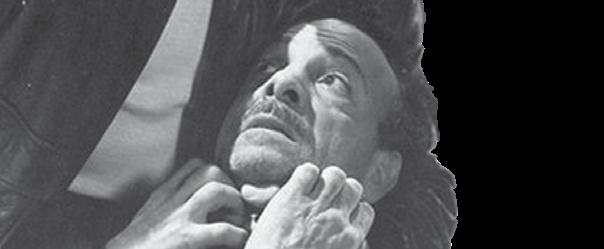
August 6 (Wednesday) 9:00 pm
August 11 (Monday) 6:30 pm

Kiss of Death
USA 1947
Henry Hathaway 98 min. DCP
Henry Hathaway’s New York-shot noir is famed for iconic tough guy Richard Widmark’s blistering (and Oscarnominated) screen debut. The actor plays cackling, sadistic hoodlum Tommy Udo, “the template for every homicidal maniac in cinema” (Clancy Brown, Empire). Victor Mature, headliner, is jailbird Nick Bianco, cuffed on Christmas Eve for holding up a jewelry store. His decision to turn stool pigeon for the sake of his kids sends him on a collision course with the psychopathic Udo. The hard-hitting script is by legendary screenwriters Ben Hecht (Notorious) and Charles Lederer (His Girl Friday ), while the cinematography, contrasting documentary-like exteriors with highly stylized interiors, is by Norbert Brodine (Thieves’ Highway ). A much grislier version of the film, depicting the dark fate of Bianco’s wife, was rejected by censors. Widmark’s performance was apparently inspired by the Joker in Batman comics, and likely influenced Heath Ledger’s take as the Clown Prince in Nolan’s The Dark Knight
“Does any psychopath in film noir’s rogues gallery strike quite as much immediate, stomach-churning terror as Tommy Udo? … Widmark’s Oscar-nominated performance makes the entire enterprise feel vital. He’s a villain for the ages.”
Andy Crump, Paste

August 10 (Sunday) 8:40 pm
August 30 (Saturday) 6:30 pm
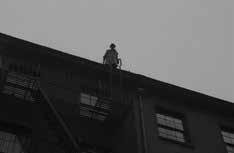
Blast of Silence
USA 1961
Allen Baron
77 min. DCP
New Restoration
“As bleak as noir gets … [Recalls] JeanPierre Melville’s French thrillers, and [has] a street-tough taste that suggests Cassavetes and points ahead to Scorsese.”
Michael Wilmington, Chicago Tribune
Be it a straggler of the classic noir cycle or a forerunner of the neo-noir next generation, either way you slice it, Allen Baron’s 1961 cult classic is noir to the bone! A stylish, pared-down hitman picture that anticipates Melville’s Le samouraï, Blast of Silence stars director Baron as Frankie Bono, a hired gun whose latest assignment drops him in hometown Manhattan on Christmas Eve. The target: a mid-rung mobster. The stipulation: if Frankie is spotted in NYC, the contract is terminated. Blast of Silence was made on a shoestring, shot sans permits in real locations, and features one of the most captivating and idiosyncratic voiceovers in all of noir—a pulpy, existential secondperson address (performed by Lionel Stander and written by Waldo Salt, both uncredited blacklisters), which conflates the viewer with the morally ambivalent antihero. This digital restoration reinstates the movie’s original 1.85:1 aspect ratio.
August 13 (Wednesday) 8:30 pm
August 23 (Saturday) 6:30 pm
August 26 (Tuesday) 8:40 pm

Sweet Smell of Success
USA 1957
Alexander Mackendrick 96 min. DCP
“I love this dirty town.” Noir goes Broadway—and gets real nasty—in the sensationally scabrous Sweet Smell of Success, directed with impressive panache by Ealing comedy expert Alexander Mackendrick in his American debut. Tony Curtis is Sidney Falco, a slimy, sycophantic New York press agent willing to do anything to ingratiate himself with J.J. Hunsecker, a highly influential, monstrously manipulative gossip columnist played by Burt Lancaster. When Hunsecker asks Falco to destroy the reputation of the clean-cut jazz musician dating Hunsecker’s sister, he concocts a vicious scheme to smear the innocent man. What unfolds is a gloriously perverse, spiritedly cynical slice-of-sleaze in which power, corruption, and lies are the order of the day. Rendered in striking high-contrast cinematography by James Wong Howe, featuring wickedly pungent dialogue by Clifford Odets, and set to a superior jazz score by Elmer Bernstein.
“A cookie full of arsenic; a delicious and dangerous tour of journalism’s dark underbelly … Its pleasures are almost obscenely abundant.”
A.O. Scott, The New York Times
Denys Arcand’s Crime Trilogy
July 31–August 31
Long before he scored Canada its first (and so far, only) International Feature Oscar for 2003’s The Barbarian Invasions, Quebecois auteur Denys Arcand earned his stripes as a narrative filmmaker with a trio of unsavoury genre pictures made at the height of the exploitation-cinema boom of the ’70s. Dubbed the “Crime Trilogy,” these three consecutive works— Dirty Money (1972), Réjeanne Padovani (1973), and Gina (1975)—proved the erstwhile NFB documentarian could make good in the arena of downmarket commercial cinema while still preserving the lacerating edge of his sociopolitical commentary. They also betray a masterful grasp of the codes and zeitgeist-reflecting anxieties of classic film noir, each movie a blackened mirror of transgression and moral corruption stemming from a post-October Crisis Quebec.
July 31 (Thursday) 8:30 pm
August 10 (Sunday) 6:30 pm
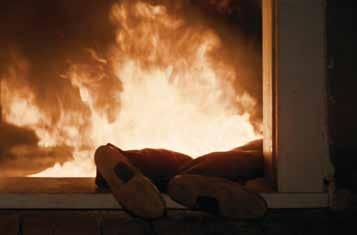
Dirty Money
La maudite galette
Canada 1972
Denys Arcand
100 min. DCP
In French with English subtitles
New Restoration
“Perhaps the first authentic masterpiece of fiction from the cinema Quebecois.”
Louis Marcorelles, Le Monde
The savagely bleak commercial debut of former NFB filmmaker Denys Arcand is a sinuous tale of rapacity run amok, set firmly within the misanthropic gutter-world of film noir. When hard-up couple Roland (René Caron) and Berthe (Luce Guilbeault) take umbrage with a wealthy uncle’s meager financial gift, they hatch a plan to burglarize—with balaclavas and brutal force—his rural farmhouse. The scheme goes sideways when they discount the cunning of a mousy lodger (Marcel Sabourin) willing to kill for a windfall. Arcand, still in the wake of a public dust-up with the Film Board over his banned exposé of exploited Quebec textile workers (On est au coton), delivers a pitch-black portrait of dogeat-dog society where backstabbing and body dumping are par for the course. Though the Oscar winner earns laurels for his talky, bourgeois dramas, Dirty Money demonstrates Arcand’s second calling for nasty, neo-noir fare.

“This trilogy represents a high-water mark both for Canadian crime cinema and for post-modern international genre revisionism.”
Anthology Film Archives
August 8 (Friday) 9:00 pm
August 24 (Sunday) 6:30 pm
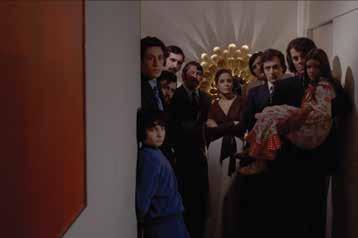
Réjeanne Padovani
Canada 1973
Denys Arcand
94 min. DCP
In French with English subtitles
New Restoration
Quebec’s political class is brutally skewered—and real-life counterparts only negligibly veiled—in Denys Arcand’s expertly orchestrated crime-syndicate satire, a Directors’ Fortnight selection at Cannes. Dirty Money ’s Luce Guilbeault is the Mrs. Padovani of the title, estranged wife to a Montreal bigwig (Jean Lajeunesse) with mafia ties and a crooked mayor in his pocket. Banished by her husband after an affair with a rival contractor, her reappearance in town—violating a do-or-die ultimatum—threatens to ruin an haute dinner party celebrating the completion of a highway project. Co-written by Arcand and novelist Jacques Benoît, this acerbic ensemble picture draws from the Rules of the Game playbook—politicians and power brokers upstairs; hired guns and call girls below—while building toward the violent crescendo of a Hollywood gangster movie. The film’s dismantling of government villainy proved prescient when, more than three decades later, Quebec’s landmark public investigation into construction-contract corruption put mayors and mobsters in cahoots.
“A grand, gloriously acidic indictment of the pervasive corruption that infiltrated all corners of ’70s Quebec … This is one of Canada’s sharpest and most incriminating cinematic self-portraits.”
Canadian Independent Pictures
August 21 (Thursday) 9:00 pm August 31 (Sunday) 6:30 pm
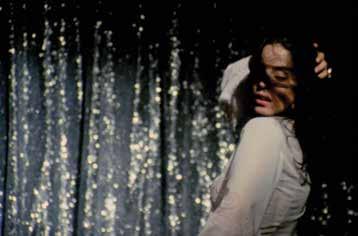
Gina
Canada 1975
Denys Arcand
95 min. DCP
In French with English subtitles
New Restoration
“The most underrated of Arcand’s films.”
John Harkness, Now Magazine
By turns a grindhouse rape-revenge picture and a leftist labourabuse drama, Denys Arcand’s Gina is a strange but potent brew. On the one hand, there’s the eponymous heroine (Céline Lomez), a headstrong Montreal stripper hired to dance at a hotel cabaret in Louiseville, a textile-factory town. On the other, there’s the runand-gun crew of NFB filmmakers chasing a story about oppressive working conditions at the mill. (The reference to Arcand’s own unfavourable experience with a nearly identical Film Board production is impossibly obvious.) The outsiders’ convergence at the snow-submerged tavern attracts the attention of a pack of maniacal snowmobilers, whose unspeakable actions (set to “God Save the Queen”) are answered with extreme prejudice. Drawing ironic association between forms of worker exploitation—and wielding the gory tropes of exploitation cinema accordingly— Arcand concludes his ’70s crime saga with one doozy of a denouement.
Advisory: Gina includes a scene of sexual violence.
Two Crime Films by Kurosawa Akira
August 2–September 1
A double-shot sidebar to our summer noir season, this pair of procedurals from Japanese eminence Kurosawa Akira serves as a run-up to the forthcoming “Eternal Master” exhibition, a touring showcase of newly restored Kurosawa work, which will arrive, en masse, in our next programming cycle (September–October).
August 2 (Saturday)
8:45 pm
August 8 (Friday) 6:30 pm
August 11 (Monday) 8:40 pm
August 21 (Thursday) 6:30 pm

Stray Dog
野良犬
Japan 1949
Kurosawa Akira 122 min. DCP
New Restoration
Kurosawa Akira’s sizzling noir thriller offers an arrestingly atmospheric (and hellish) portrait of postwar Tokyo. Mifune Toshiro (in his third collaboration with Kurosawa) plays rookie cop Murakami, awkward in his new white suit, whose pistol is stolen on a crowded bus. Dishonoured and fearful of losing his job, he tracks the pickpocket through the menacing streets of Tokyo in the midst of a sweltering summer heat wave. As his obsessive pursuit drags on, disturbing parallels link the officer and his criminal prey. Stray Dog was adapted with screenwriter Kikushima Ryuzo (High and Low) from Kurosawa’s own unpublished detective novel; the director has said of both novel and film, “I am very fond of Georges Simenon, and I wanted to do something in his manner.” Jules Dassin’s summer-nights noir The Naked City was also a recognized influence. Kurosawa regular Shimura Takashi co-stars.
“One of the greatest detective films ever made.”
Elvis Mitchell, The New York Times
August 12 (Tuesday)
7:00 pm
August 17 (Sunday) 7:00 pm
August 29 (Friday) 7:00 pm
September 1 (Monday) 7:00 pm

High and Low
天国と地獄
Japan 1963
Kurosawa Akira 143 min. DCP
New Restoration
“The masterpiece of Kurosawa’s modern-day movies.”
Elliott Stein, Village Voice
Kurosawa Akira’s extraordinary High and Low, remixed this year in Spike Lee’s newest joint, is a morally complex thriller adapted from a novel by American crime writer Ed McBain. Gondo (Mifune Toshiro), a self-made tycoon in financial straits, receives word that his young son has been kidnapped. Paying the ransom demand will clearly sink him—but when it is learned that the kidnapper has actually grabbed the chauffeur’s son by mistake, yet is still demanding the huge ransom, Gondo faces a terrible dilemma. The first half unfolds mostly within the suspensefully static confines of a single room; the second half explodes into a frenetic noir police procedural. High and Low is one of Kurosawa’s most impressively formal works, with taut CinemaScope framing, marvellous deepfocus compositions, gripping set pieces, great use of mirrors and reflections, and ironic point-of-view interplay between high and low—or, as the Japanese title has it, heaven and hell.
Obayashi in the ’80s
A filmmaker whose underground roots blossomed into popular success, Obayashi Nobuhiko (1938–2020) isn’t by any stretch of the imagination an unknown.
The sensational re-release of House in the early 2010s assured notoriety in North America if nothing else, but the very limited availability of his extensive filmography meant that he could be both praised and misconstrued—sometimes in the same sentence. Obayashi was a wild optimist—in style, worldview, and his relationship to youth culture. Now, with more of his films becoming available in North America, it’s possible to see the ways the filmmaker wasn’t just a committed conjurer of special effects and cult hits, but a studio artist (as well as a loyal sketch artist of his hometown of Onomichi) who could bend the world, and the Japanese film industry, to his point of view.
Following the restoration release of the masterful Beijing Watermelon last summer, four of his most successful films from the 1980s are now available in North America for the first time. Together they show the lead-up to that late-’80s triumph, and stand as influential time capsules of pop idols, schoolyard rivalries, teen sci-fi, vacation travelogues, and counter-cultural romance. At the same time, their rhythms are inspired by something more personal than these genre labels, as each measures their protagonist’s self-knowledge against the barometer of the wider world. Obayashi, impatient and independently minded and resourceful, built from strength to strength over the decade, connecting with audiences during a downturn in Japanese studio filmmaking, while building on formal experiments that would continue to activate his imagination through the rest of his long career.
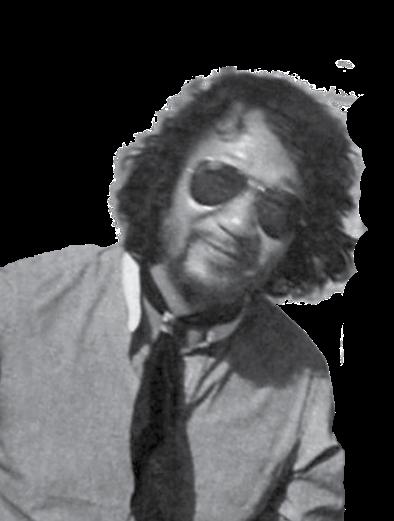
August 14 (Thursday) 6:30 pm
August 24 (Sunday) 8:30 pm
September 3 (Wednesday) 6:30 pm

School in the Crosshairs
Japan 1981
Obayashi Nobuhiko
90 min. DCP
In Japanese with English subtitles
A popular idol film and an artistic cri de coeur all in one, Obayashi Nobuhiko’s School in the Crosshairs posits education—like only he could—as a societal microcosm, a magical space-to-earth portal, and a melodramatic bildungsroman. Yakushimaru Hiroko (Sailor Suit and Machine Gun) plays Yuka, who discovers that she has the unasked-for gift of psychic powers. “Studying is like warfare,” as one character puts it; the question of against whom is answered when a new administrative group of domineering students descends upon Yuka’s home campus. The seemingly contained arena of a kendo tournament becomes an Olympian duel of the gods where the stakes evolve from petty rivalry to the limits of reality, yet the film never entirely departs from the charming bedroom-pop tone of the film’s fantastic opening credits song (“You Don’t Have to Worry”). Even when making a purely entertaining youth film, Obayashi never treats his subject matter— or his film craft—as something disposable.
“At once real and surreal … The ultimate teen movie for any student who’s ever suspected their place of education has been infiltrated by fascists.”
Hayley Scanlon, Windows on Worlds
“In all his best work, there is a sharp logic running beneath [the] surface absurdity of Obayashi’s films … The 1980s [are] his most commercially successful decade … also his most adventurous one.”
Hal Young, Senses of Cinema
August 14 (Thursday)
8:30 pm
August 25 (Monday) 6:30 pm
August 30 (Saturday) 8:20 pm
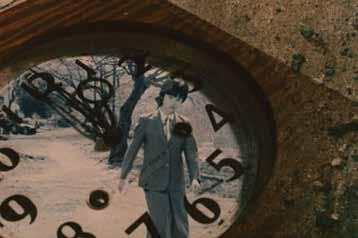
The Girl Who Leapt Through Time
aka The Little Girl Who Conquered Time
時をかける少女
Japan 1983
Obayashi Nobuhiko
104 min. DCP
In Japanese with English subtitles
“Obayashi’s signature experimental techniques are present, but it’s in service of deep nostalgia for the earnest, painful emotions of youth.”
Danielle Burgos, Screen Slate
Few films by Obayashi Nobuhiko have greater name recognition than his adaptation of Tsutsui Yasutaka’s The Girl Who Leapt Through Time, the first to make it to the screen. The sci-fi drama was a major success, making a name for idol Harada Tomoyo (and the film’s title song), but from its first frames—of a monochrome ski trip set among the stars—it’s clear that rather than a cashin, this is a project where Obayashi’s personal imprint is keenly felt. Set in his hometown of Onomichi, Girl Who Leapt follows the irregularities of teenager Kazuko’s daily life after she is altered by a lavender-scented drug during a chemistry lab clean-up, as well as by her encounter with the mysterious student Fukamachi. Whether due to longing or something more supernatural, Kazuko begins to experience time differently, anticipating calamities and returning to recurring moments, dreams, and memories. Her increasingly strange life, gently and inexorably, becomes combined with both friendly affirmation and fate.
August 16 (Saturday)
6:30 pm
September 4 (Thursday) 8:45 pm

The Island Closest to Heaven
Japan 1984
Obayashi Nobuhiko
103 min. DCP
In Japanese, French, English, and Kanak with English subtitles
Following up on the success of The Girl Who Leapt Through Time, director Obayashi Nobuhiko and idol Harada Tomoyo reteamed for this minor-key voyage, in which sunny tourism provides cover for the harder-to-define process of discovery in the wake of loss. All that teenager Mari has left of her father (Takahashi Yukihiro) are memories, particularly one in which he describes the paradisal shores of New Caledonia. She flies there, and quickly abandons her travelling group to find this destination her own way, though not without hearing from a guide or two (one of whom invokes the title phenomenon of Jules Verne’s The Green Ray). With its images, both exoticized and clear-eyed, of Japanese intercultural encounters, The Island Closest to Heaven exists in between an early Obayashi work like Take Me Away! and the mature style of Beijing Watermelon in a way that parallels Mari’s journey: of a young person adrift, unsure, and for this reason closer to selfunderstanding.
“One of Obayashi’s breeziest features, filled with a sense of old school Hollywood romanticism, The Island Closest to Heaven forms an affecting portrait of a young girl’s journey to selfdiscovery.”
Japan Society (New York)
August 22 (Friday) 6:30 pm
August 28 (Thursday) 8:50 pm
September 3 (Wednesday) 8:30 pm

His Motorbike, Her Island
Japan 1986
Obayashi Nobuhiko
90 min. DCP
In Japanese with English subtitles
“Obayashi’s best romance film, a deeply bittersweet portrayal of a romantic triangle between a girl, Miyo, a boy, Koo, and his motorcycles.”
Hal Young, Senses of Cinema
“Some guys have vividly coloured dreams, but mine were always in monochrome.” So begins what is likely Obayashi Nobuhiko’s most beloved movie, a branching narrative of love ending and beginning, in which desire is channelled through totems—photographs, songs, and beloved Kawasakis—that mix tenderness and danger. Koh (Takeuchi Riki) is the motorcyclist, a courier for ambulancechasing news journalists. He meets Fuyumi (Watanabe Noriko), and then he meets Miyo (Harada Kiwako), and every sequence is torqued in and out of retrospect. The film’s energy feeds off the disreputable bosozoku culture that was burgeoning in the mid’80s, but Obayashi’s editing is where the project’s true heart beats, across jump-cuts and the exchange of colour and black-and-white stocks. His Motorbike, Her Island belongs to no new wave, but its spirit of invention, midway through the director’s most productive decade, conjures a momentous, transcendent mix of romantic doom and rebirth.
Ongoing Series PELAN Presents
A bimonthly series organized in partnership with PELAN, a nonprofit and nonpartisan media organization spotlighting independent documentaries by Iranian and non-Iranian directors about Iranian people.
August 7 (Thursday) 7:00 pm

Parvaneh
Iran 2020
Bahman Kiarostami
68 min. DCP
In Farsi with English subtitles
Bahman Kiarostami’s intimate documentary offers an in-depth exploration of the life and artistic legacy of Parvaneh Etemadi, a pioneering Iranian visual artist. Kiarostami’s connection to Etemadi began in childhood through the cultural circles of his filmmaker father. Decades later, he turns his camera on her to explore the vibrant tapestry of her life and artistic legacy. Through insightful interviews and glimpses of her powerful paintings and collages, Parvaneh reveals the artist’s wit, sharp cynicism, and enduring optimism. It also reveals her remarkable strength in navigating patriarchal Iranian society and the male-dominated art scene. This poignant tribute to the artist, who passed away in March at 77, celebrates her charisma and rebellious spirit, evident in both her character and groundbreaking works.
Post-screening audience discussion moderated by PELAN.
“Parvaneh Etemadi [was] a major figure on the Tehrani scene and a mentor to many young artists.”
Myriam Ben Salah, Artforum
Ongoing Series
DIM Cinema
Moving-image art in dialogue with cinema.
Curated by the DIM Collective
DIM Cinema is a monthly series that presents Canadian and international movingimage art in dialogue with cinema. The series was initiated in 2008 by local curator Amy Kazymerchyk to draw attention to artists and experimental filmmakers whose practices engage with cinema as a medium, social context, formal structure, or architectural space. The name of the series is inspired by the diffused Vancouver sky, the darkness of the cinema, and a quote from James Broughton’s Making Light of It (1992): “Movie images are dim reflections of the beauty and ferocity in mankind.” From 2014 to 2024, DIM Cinema was curated by the late Michèle Smith.
The DIM Collective is Tobin Gibson, the Iris Film Collective, Steff Huì Cí Ling, and Casey Wei.
July 14 (Monday) 7:00 pm

Korakrit Arunanondchai
Program runtime: 62 min.
In English and Thai with English subtitles
“Arunanondchai is intent on provoking a transformation of today’s youth from manipulated screen dependents into a spiritually awakened and emotionally connected collectivity.”
Gilda Williams, Artforum
DIM Cinema presents a triple bill of works by Thai artist Korakrit Arunanondchai. These films, made between 2018 and 2021, highlight narratives around phenomenology, centralizing non-human animals, ghosts, and shadow histories. Natural Gods is a nature film beyond people—there are no cute creatures on view. Instead, it looks to subjectivities that do not resemble our own, imagining an expansive consciousness bigger than ego, perhaps entirely different from consciousness as we know it. In No history in a room… , “no history” refers to human history recorded through verbal storytelling and other forms of mythmaking, mutating over time. Ghosts, for example, occupy “no history” zones. The work uses the 2017 Tham Luang rescue mission to examine how the force of propaganda, spirituality, and Cold War politics can create a new myth of representation. Fire and ash are recurring motifs in Songs for Living , reminiscent of life cycles beyond physical mortality.
—Tobin Gibson
Natural Gods
USA/Thailand 2018
Korakrit
Arunanondchai
10 min. Digital
No history in a room filled with people with funny names 5 USA/Thailand 2018
Korakrit
Arunanondchai, Alex Gvojic 31 min. Digital
Songs for Living
USA/Thailand 2021
Korakrit
Arunanondchai, Alex Gvojic 21 min. Digital
August 18 (Monday) 7:00 pm
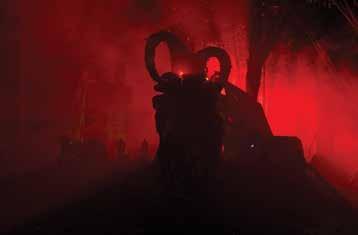
Monisme
Indonesia/Qatar 2023
Riar Rizaldi
115 min. DCP
In Indonesian and Javanese with English subtitles
“A lot like worms,” a volcanologist muses, speaking of humanity’s role in relation to Mount Merapi, one of the world’s most active stratovolcanoes. Artist and filmmaker Riar Rizaldi’s debut feature utilizes a myriad of aesthetic strategies to present a constantly morphing study of human nature under the pervasive threat of volcanic destruction. Science, superstition, state violence, and survival are fated to collide as Rizaldi questions how modernity contends with the ancient, volatile rhythms of nature. Statesanctioned paramilitaries, languishing scientists, a documentary film crew, a sad-eyed sand miner, the Indigenous mountain people—how do these characters find their motivation against the backdrop of impending annihilation? And how do we, as viewers, parse through the layers of reflexivity to find our own? —Casey Wei
“What interests me most is cinema’s capacity to capture subtle elements in nature as well as human emotions.”
Riar Rizaldi
Post-screening virtual Q&A with director Riar Rizaldi.
Ongoing Series
Our Stories to Tell
Indigenous storytelling.

Vuntut Gwitchin—A Journey of Determination and Resilience
Program runtime: 95 min.
In English and Gwich’in with English subtitles
In partnership with grunt gallery and Our World, a media-arts organization serving Indigenous communities, this month’s program shares the filmmaking journey of Vuntut Gwitchin First Nation. Located approximately 80 km north of the Arctic Circle, the remote village of Old Crow, situated on the Porcupine River, is home to around 300 people who make up the Vuntut Gwitchin (“People of the Lakes”), one of 15 Gwich’in communities across the Northwest Territories, Yukon, and Alaska. The films of Mary Jane Moses, Sophie Flather, and fellow Vuntut Gwitchin members in this program emphasize the importance of community filmmaking by celebrating, sharing, and passing on teachings of their culture and Gwich’in language, while exploring the challenges of preserving their way of life—including an important relationship with the Porcupine caribou—in the “modern world.”
Curated by Akira Iahtail, lisa g, and Sebnem Ozpeta.
Post-screening Q&A with filmmakers Mary Jane Moses and Sophie Flather.


Our Stories to Tell is a monthly series dedicated to showcasing the new wave of inspired Indigenous storytelling in film, as well as spotlighting up-and-coming Indigenous artists across Turtle Island and beyond. Programmed and hosted by Akira Iahtail, film curator and filmmaker of Cree and Swampy Cree descent.
Series advisor: Lyana Patrick, filmmaker, assistant professor in the Faculty of Health Sciences at Simon Fraser University, and member of the Stellat’en First Nation.

Nechako: It Will Be a Big River Again
Canada 2025
Lyana Patrick
91 min. DCP
In English and Dakelh with English subtitles
“Nechako does a great job of summarizing this gruelling and complex fight, but its real strength lies in the affection Patrick summons for the people behind the struggle … It’s anything but didactic.”
Adrian Mack, Stir
Our Stories to Tell celebrates series advisor Lyana Patrick on the release of her feature documentary debut, Nechako. Patrick, a member of the Stellat’en Nation, returns home to document the Stellat’en and Saik’uz Nations in their groundbreaking legal proceedings against the Canadian federal and provincial governments and Rio Tinto Alcan, subsidiary of a global mining conglomerate. In the early 1950s, the construction of the Kenney Dam irreparably damaged the landscape of Northern British Columbia, the Nechako River, and the flora, fauna, and communities of the region. Patrick’s film captures the Nations’ resistance against industry, banding together to advocate for their people and fight to restore a river and a way of life. Nechako is a call to action against large-scale environmental destruction amid a story of hope and survival for our collective future.
Post-screening Q&A with director Lyana Patrick.
Series
Film Club

July 20 (Sunday)
Film Club is a family-friendly movie matinee series held at The Cinematheque on the third Sunday of each month. By way of carefully selected all-ages titles, balancing classics and new favourites, our programming team extends a welcome to the next generation of cinemagoers—and anyone who wants to revisit a treasured film.
Free popcorn and Film Club badge for junior cinephiles (ages 13 and under), and free coffee and tea for adults!
Special discounted ticket price for parent/guardian and child under 13 ($18). Additional child tickets available at $7.
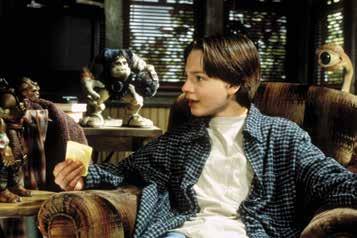
Small Soldiers
USA 1998
Joe Dante
110 min. DCP
Who runs the world? Joe Dante’s sincerely satirical and actionpacked mini-blockbuster posits the plain and uncomfortable truth that toy manufacturers and war profiteers are often in the same business: developing new ways to keep kids hooked on what they’re advertising. These dark intentions are far from the mind of young Alan (Gregory Smith) and Christy (Kirsten Dunst), the (mostly) responsible kids entrusted with helping out at the local toy store. The street-corner shop is independently owned by Alan’s family and aspires to only stock toys that foster imagination rather than violence. But through a bit of scheming, Globotech’s new line of soldiers vs. aliens end up on the shelf, develop sentience, and break out into the real world. For Dante, Pixar’s Toy Story and all-American brands like Barbie are the enemy; the E.T.-like Gorgonites and CD-ROM encyclopedias stand as allies.
“An often-overlooked childrens’ movie … Dante’s critique of multinational monopolization resonates even more today than it did in 1998.”
Nadine Smith, Little White Lies
preceded by Toys
Canada 1966
Grant Munro
7 min. DCP
This NFB-produced short cuts between the two sides of a shop window. On one side: an audience of children. On the other: stopmotion animated toys, including a squadron of soldiers. Ongoing
am

Whisper of the Heart
Japan 1995
Kondo Yoshifumi
111 min. DCP
English dubbed version
“A beautiful film … Here is a film that uses the gifts of the animated form to magnify the magical minutiae of everyday life.”
David Jenkins, Time Out ’s 50 Greatest Animated Films (#21)
Perhaps the most underrated Studio Ghibli film (it is directed neither by Miyazaki Hayao nor Takahata Isao) turns 30 this year. Debut filmmaker Kondo Yoshifumi was mentored by Miyazaki, and Whisper of the Heart feels like a synthesis of both his and Takahata’s approach, using fantasy and unhurried latesummer detail to develop a tale of artistic awakening. Shiziku is approaching her first year of high school, but most of her mind is occupied by a timeless dilemma: how to turn the words and pictures in her head into something others might understand, or even enjoy? She meets a mysterious cat and an antique shop owner, who give her space for devotion to her writing. Kondo’s film is rooted in resonant, eclectic details. Shiziku’s interest in the young violinist Seiji starts when she sees his name on the check-out slips for all the library books she’s reserving, while the development of her personal voice begins with scenes invoking both Olivia Newton-John and Alice in Wonderland


